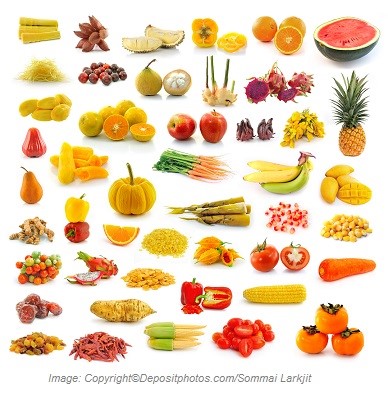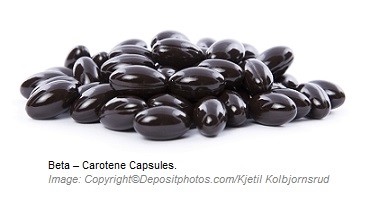They are organic compounds that give the yellow and orange colors to  fruits and vegetables. They are basically pigments that absorb light.
fruits and vegetables. They are basically pigments that absorb light.
Subtypes:
They are two groups of carotenoids: carotenes (alpha-carotene, beta-carotene, gamma-carotene, delta-carotene, zeta-carotene, and lycopene), and xanthophylls (lutein, zeaxanthin, astaxanthin, canthaxanthin, cryptoxanthin, and neoxanthin).
Food Sources:
Fruits: apricot, bilberry, blackberry, cantaloupe, canary melon, cherimoya, cherries, clementine, cranberry, dates, durian, figs, gac, goji berries, grapefruit, grapes, guava, honeydew melon, kiwi, mandarin, mango, nectarine, olive, orange, papaya, peach, persimmon, pineapple, pitaya, plantain, plums, sea buckthorn, tangerine, Satsuma, tamarillo, passionfruit, and watermelon.
Vegetables: alfalfa sprouts, artichoke, arugula, avocado, basil, beets, bell pepper, Bok Choy, broccoli, Brussels sprouts, cabbage, carrots, cauliflower, chard, chili pepper, chicory, collard greens, corn, coriander, eggplant, endive, gai-lan, green beans, green peas, kale, leek, lettuce, mustard greens, parsley, parsnip, potatoes, pumpkin, radicchio, radish, spinach, squash, sweet potatoes, tomatoes, turnip greens, watercress, and yams.
Health Benefits:
- They are potent antioxidants.
- Act as a pro-vitamin A.
- Promote healthy eyes and vision.
- Prevent from age-related eye diseases.
- Protect from age-related macular degeneration (ARMD).
- May reduce risk of developing certain cancers, especially prostate, bladder and lung cancers.

